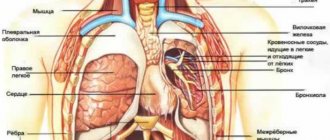Bird flu: myths and truth: Freepick Bird flu made itself known in mid-September 2020: cases of the disease in poultry were registered in five regions of Kazakhstan. This led to a high mortality rate, which worried not only agricultural workers, but also all citizens. Let's take a closer look at what bird flu is so as not to give in to panic and fears that are based on myths about the disease.
General information
Bird flu is a rare, but very dangerous human disease that is caused by strains of influenza type A. As a rule, they affect domestic and wild birds.
But relatively recently, infections caused by these strains have also been recorded in humans. Most cases of this disease in humans have been caused by the Asian strains of influenza H5N1 and H7N9 . Interestingly, if wild birds become infected with these strains, the disease occurs without symptoms, while poultry may die.
Human infection with H5N1 was first identified in Hong Kong in 1997. However, people experienced severe respiratory symptoms and a high mortality rate. A few years later, cases were recorded again - mainly in Asia and the Middle East. There have been periodic outbreaks of bird flu in China.
How avian influenza manifests itself in humans and how this disease should be treated will be discussed in this article.
This is useful for everyone to know
Avian influenza is a highly contagious viral infection of birds, which can be asymptomatic among them or cause death. In recent years, one of the bird flu strains has become pathogenic for humans. The carriers of the infection are mostly wild birds (waterfowl - geese, ducks), which practically do not get sick, but tend to migrate from place to place and thereby transmit viruses over long distances. Domestic bird species susceptible to infection with the avian influenza virus are chickens and turkeys.
Bird flu first became known in 1997, when an outbreak of the disease among humans was recorded in Hong Kong with a fatality rate of up to 60%. The H5N1 virus then spread from Asia to Europe and Africa. In Russia, avian influenza A (H5N1) in birds in previous years was recorded in the Novosibirsk, Kurgan, Chelyabinsk, Tambov, Tula regions and Altai. Several years ago, more than 200 swans in the Astrakhan region died from a dangerous disease. Bird flu used to circulate periodically in Western European countries. In 2003, an outbreak of avian influenza A (H7N7) was reported in the Netherlands, during which 89 people became ill, including one death from a pulmonary complication.
Epidemic situation in 2013: In April 2013, an outbreak of avian influenza A (H7N9) was registered in China, in which about 130 people fell ill (32 people died). According to WHO, in August-September 2013, cases of avian influenza were reported among poultry on Italian farms in which the highly pathogenic H7N7 strain was detected. Several hundred thousand birds are being slaughtered due to an outbreak of bird flu. This strain of the virus, with a certain mutation, may well become pathogenic for humans. Also at this time, a case of bird flu was recorded in one farm employee. In this regard, the chief state sanitary doctor G.G. Onishchenko instructed epidemiologists to inform the population about this epidemic situation, and medical workers to be more attentive to patients with ARVI coming from Italy. Recently, a highly pathogenic strain of influenza A virus (H7N9) has also emerged in China.
Causes of bird flu
The avian influenza virus belongs to the Ortomyxoviridae family, type A influenza viruses. The structure of the virus is complex. It is an RNA-containing virus, two proteins are known in the outer shell - hemagglutinin (the function of attaching the virus to the target cell of the host, as well as the production of antibodies, including protective ones, that is, the development of immunity) and neuraminidase (the function of penetration of the virus into the target cell and virus replication inside the cell). To date, several subtypes of hemagglutinin and neuraminidase have been studied, thereby distinguishing different antigenic types of avian influenza virus. The H7N7 antigenic type is capable of causing the so-called “chicken plague”, and H5N1 - the complete death of chickens. It is these two types that are highly pathogenic for poultry (100% bird mortality within 48 hours). There are also low-pathogenic strains (birds either carry the infection or carry it in a mild form).
Avian influenza virus
What is the pathogenicity of the avian influenza virus to humans? The previous 10-12 years have shown that the H5N1 and H7N7 viruses mutate rapidly, which has significantly affected their properties. Now they easily go beyond the avian population, passing through the body of a pig and spreading among people, who are increasingly diagnosed with severe forms of infection, as well as a fulminant course with a fatal outcome.
The source of infection is wild waterfowl (ducks, geese) and poultry (chickens, turkeys). The virus is found in the intestines and is excreted in feces.
Death of poultry from avian influenza
The mechanism of infection is aerogenic (the route is airborne). Most cases of avian influenza in humans are associated with actual contact with sick birds (live or dead). No person-to-person transmission of the virus has been reported.
Symptoms of bird flu in humans
The duration of the incubation period (from the moment of infection to the onset of symptoms) for influenza A (H5N1) is usually 2-3 days, but can range from 1 to 8 days, and in rare cases up to 2 weeks.
Symptoms of the disease can be combined into several clinical syndromes: 1) infectious-toxic; 2) respiratory; 3) gastrointestinal.
The onset of bird flu is always acute, which is associated with its high pathogenicity for humans. There is tremendous chills, nasal discharge, sore throat, and muscle pain. Often patients are bothered by irregular stools, including watery stools, and frequent vomiting. The most constant symptom is an increase in body temperature to 38-40º, and from the first day of illness it is immediately high. After 2-3 days, respiratory syndrome appears: primary viral pneumonia often develops (the patient has a severe cough with clear sputum, sometimes mixed with blood, and shortness of breath quickly develops). On auscultation, there is harsh breathing and moist rales.
When performing a chest x-ray, already at the beginning of the disease, multiple, sometimes extensive inflammatory infiltrates are detected, the peculiarity of which is the rapid fusion and spread beyond the primary focus of inflammation; sometimes lobar compactions.
Further development of the disease leads to the development of complications: respiratory failure and acute respiratory distress syndrome (ARDS). ARDS is accompanied by severe total inflammation of the lung tissue, severe respiratory impairment, oxygen deficiency and the development of pulmonary edema. Often the development of such a complication is fatal for the patient.
Respiratory distress syndrome
In the peripheral blood of patients, the following is determined: a decrease in leukocytes (< 2.10 • 109 /l), a decrease in lymphocytes and platelets.
Manifestations of avian influenza may include dysfunction of the liver and kidneys; more than a third of patients develop acute renal failure. The levels of ALT, AST, and creatinine increase in the blood.
Young children (up to 3 years old) are very seriously ill. Often the virus overcomes the blood-brain barrier and encephalitis (inflammation of the brain substance) develops. Severe headache with vomiting and possible impairment of consciousness are added to the existing complaints.
Risk factors for developing a severe form: late seeking medical help, initially low levels of leukocytes in the blood (immunodeficiency), the presence of concomitant diseases.
The prognosis is usually unfavorable. Mortality reaches 50-60%. Death is usually observed in the second week of illness.
Immunity after an infection is type-specific and short-term. Re-infection is possible in another season.
Diagnosis of bird flu
Due to the similarity of the symptoms of avian influenza A(H5N1) with the symptoms of regular influenza, it is difficult to make a correct diagnosis at the beginning of the disease. Reports of outbreaks of influenza A(H5N1) or the death of poultry in the areas where patients live help; contact with a patient confirmed to be infected with influenza A (H5N1) virus, as well as an unknown acute respiratory viral infection, 7 days before the appearance of the first clinical signs; arriving from a country where outbreaks of avian influenza have been reported among poultry; as well as occupational infection - veterinarians, poultry farm workers.
Symptoms to suspect bird flu:
- High fever, cough and difficulty breathing from the first days of illness;
- Stool disorder (in the absence of mucus and blood in the feces);
- Rapid increase in severity of symptoms.
Definitive confirmation of avian influenza A(H5N1) can occur by the following methods:
- immunological methods (immunofluorescent analysis for H5 - antigen using H5-monoclonal antibodies or determination of specific H5 antibodies in paired patient sera),
- molecular genetic (PCR for A/H5) methods,
- by virological methods - isolation of the virus (positive viral culture for A/H5).
Treatment of bird flu
1) Regular measures: all patients with suspected avian influenza are hospitalized in a hospital. Discharge is carried out only after the temperature has normalized for 7 days. 2) Specific treatment includes broad-spectrum antiviral drugs: oseltamivir or Tamiflu, zanamivir or Relenza, arbidol, algirem. 3) Symptomatic treatment: in case of high temperature reaction, antipyretics are used (paracetamol, Nise, ibuprofen). They have an enhancing effect of antiviral therapy.
Drugs that are NOT used in the treatment of influenza A (H5N1): salicylates (aspirin), analgin. Analgin and anti-grippins are strictly contraindicated for the treatment of bird flu.
Antibiotics are prescribed only if mixed pneumonia is suspected (that is, viral-bacterial). In case of severe pneumonia with a threat of complications, hormonal drugs are prescribed.
Preventive treatment or emergency prophylaxis. As a means of emergency prevention, the drug Amiksin, Cycloferon and other interferon inducers are recommended. The earlier they are prescribed, the higher the effectiveness of interferon inducers. They are recommended for risk groups and medical personnel in infectious diseases hospitals when caring for and treating patients with influenza pneumonia.
Prevention of bird flu
WHO recommends vaccination with a regular influenza vaccine in areas where avian influenza is endemic. This is done to prevent two pathogenic strains of the influenza A virus from reaching one person, which will certainly cause a fulminant course of bird flu.
Risk groups for vaccination include:
- Contacts of poultry or poultry farms suspected of being infected with avian influenza (H5N1).
- Health care workers treating patients with H5N1 influenza.
A specific vaccine against avian influenza has not yet been released for widespread use among the population.
Chemoprophylaxis of avian influenza is carried out by prescribing interferon inducers (cycloferon and amixin), algirem, rimantadine, arbidol and oseltamivir (Tamiflu) as antiviral drugs. All contacts in the outbreak of bird flu, as well as farm workers, are subject to prevention.
Currently, the main concern is the possibility of transmission of the virus from person to person. This will lead to the development of a severe and widespread avian influenza pandemic, covering many countries and continents in scale.
Infectious disease doctor N.I. Bykova
- Back
- Forward
Pathogenesis
When infected with the influenza virus, selective damage to the epithelium of the respiratory tract occurs. When viruses multiply in columnar epithelial cells, they gradually cause their degenerative changes. Host cells are used to build new viral particles. Since the replication of the H5III virus occurs not only through epithelial cells of the respiratory tract, but also through intestinal epithelial cells. Therefore, the disease can manifest itself not only as catarrhal syndrome, but also as damage to the gastrointestinal tract.
The influenza virus causes cytopathic, vasopathic and immunosuppressive pathomorphological changes. The causative agent of influenza, virus type A, is more stable in the environment than the human virus. It can survive in bird droppings for about 3 months, can tolerate low temperatures well, but dies under the influence of disinfectants. It is characterized by high contagiousness and variability.
Myths and dangerous misconceptions in treatment
The question of whether to get a flu vaccine in the midst of a mass disease of people has a clear answer - no. During an epidemic, a person may already have the virus, which will create a double infectious load for the body. The flu vaccine should be given earlier. Be careful with aspirin. This is an excellent antipyretic, but not for the flu. It thins the blood and increases the penetration of viruses into blood vessels and cells, aggravating the health condition. Hot foot baths are also famous. They help relieve swelling of the mucous membrane of the upper respiratory tract - this is true. They can only be done during periods when there is no fever. Otherwise, the load on the heart increases significantly. Hot inhalation with potatoes is a traditional method, but it is also dangerous due to the risk of getting a steam burn to the mucous membrane.
Causes
In nature, the main reservoir of avian influenza is migratory wild migratory waterfowl, as well as domestic birds. The virus is found in the digestive tract of birds and is excreted in the feces.
Infection can occur in the following cases:
- If a person comes into contact with infected birds (in factories, households, zoos, etc.).
- From bird droppings - through contaminated objects and hands.
- From dead birds.
The disease is not transmitted from person to person.
What to do with a sick bird
If pronounced symptoms of the disease appear, veterinarians in the region are informed. Once the diagnosis is confirmed, the diseased birds are destroyed.
The poultry house is quarantined. Sick birds are killed and sent to the laboratory for examination.
Important! Birds located near infected individuals are also exterminated to prevent the spread of the infectious disease. All products of infected individuals are disposed of.
Symptoms of bird flu in humans
As a rule, the incubation period lasts 2-3 days, less often it can last up to 7 days.
- Symptoms in people are immediately acute. Body temperature rises - up to 39 degrees and above. Fever lasts 10-12 days. If the disease is fatal, the temperature does not subside until the patient dies.
- The disease is also characterized by headache , chills , pain in joints and muscles.
- At the height of the disease, a cough appears on days 2-3, and sputum with blood may be coughed up. The throat hurts, there are signs of bronchitis and rhinitis .
- The digestive tract is also affected, resulting in diarrhea , vomiting, and abdominal pain.
- Sometimes there are signs of kidney and liver damage.
- encephalitis develops , and consciousness is impaired.
Symptoms in birds
The incubation period for chickens and other birds lasts from 12 to 48 hours. If birds are affected by chicken flu, they become lethargic and their egg production decreases. Sick birds may drink a lot and their mucous membranes turn red. Feathers are ruffled. Before the bird dies, its comb and earrings turn blue. Possible diarrhea with greenish stools, convulsions, and difficulty walking. The sick bird is immediately destroyed.
Types of influenza
Today there are many types of influenza (more than 2 thousand varieties of the virus). Some of them are quite serious and occur in severe form.
The disease is divided into several types: A, B and C.
Types A and B are the most common and occur in 20% of people every year. These types are characterized by the following symptoms: fever, lethargy, cough.
Type C is much less common and has similar symptoms.
Influenza type B, unlike virus A, was found only in humans. This type leads to less serious consequences, but in some cases the disease can occur in a complex form.
Virus B is not divided into subtypes, while influenza A is divided into A1 and A2.
Type C is also common among humans. It does not manifest itself so strongly and occurs in a light firmament. Virus C in its scale is not capable of causing an epidemic.
The drug Remantadine has proven itself to be effective against colds.
Tests and diagnostics
- After the patient contacts the doctor, the specialist must determine whether the patient has had contact with potentially infected birds or traveled to regions with an increased risk of disease transmission.
- When listening to the patient, wheezing and harsh breathing are detected.
- An X-ray examination is carried out, where instantly spreading infiltration is determined.
- Laboratory tests are also carried out. A blood test demonstrates a decrease in lymphocytes , leukocytes , and platelets .
- An RT-PCR analysis is carried out, for which a swab is taken from the nose or throat.
- Sputum and endotracheal aspirate samples can also be taken for analysis.
If a case of avian influenza is confirmed or suspected during the diagnostic process, it is reported to the Centers for Disease Control and Prevention.
How to treat and can it be cured at all?
Important! It is currently impossible to cure acute influenza. All sick chickens and potentially infected individuals in contact with them are destroyed.
The poultry house is quarantined. All items located in the chicken coop or near sick birds are destroyed. Meat, eggs, feathers and other products are disposed of.
With a mild form of the disease, birds with good immunity cope with the disease on their own.
H5N1 is the most dangerous variant of the virus
To stimulate the development of immunity and ensure its active work in the fight against the virus, birds are given medications (antibiotics and vitamins). When quarantine is established in the region, birds are also given antibiotics and vitamins.
Treatment with folk remedies
Bird flu is a dangerous disease that requires treatment in a hospital and under the supervision of a doctor. Therefore, in this case we are not talking about treatment with folk remedies. Their use is possible already at the stage of rehabilitation after illness. During this period, it is recommended to use the following means:
- General strengthening herbal teas - they can be prepared from chamomile flowers, lingonberry leaves, blueberries, raspberries, sage, mint, etc.
- It is useful to prepare decoctions of rosehip and hawthorn berries.
- It is recommended to consume 1 tsp of natural honey every day. twice a day,
- A remedy made from dried fruits and nuts is useful. To prepare it, you should chop and mix 100 g of raisins, dried apricots, walnuts, mix, add 50 ml of honey. Keep the product in the refrigerator, consume 2 tbsp. l per day.
When to see a doctor
Flu symptoms may appear within 2 hours to 2 days. You should immediately consult a doctor or call an ambulance if your condition worsens:
- breathe heavily;
- repeated vomiting and bowel movements;
- impaired consciousness and low blood pressure;
- long-term temperature 38-39°C;
- blood in the sputum when coughing;
- chest pain.
An infectious disease doctor specializes in the diagnosis and treatment of infectious diseases. You can get a consultation and receive treatment for influenza at (academician Roitberg’s clinic). The effectiveness of therapy depends on determining the strain of the virus, so testing will help make the correct diagnosis and select medications.
Preparing to visit the doctor
No special preparation is required to visit an infectious disease specialist. At the appointment, the doctor will collect anamnesis, ask about vaccinations, conduct an examination and prescribe tests. If you are already taking any flu medicine, tell your doctor. For the future, you may want to ask which flu shots are effective in preventing a recurrence.
Prevention
There is currently no vaccine for this virus. Therefore, preventive measures boil down to following the following rules:
- Always cook poultry meat and eggs thoroughly.
- Destroy all infected birds on farms. At the same time, people who do this work must wear appropriate protective clothing.
- Conduct regular sanitary and epidemiological control over birds kept on farms and in private yards.
- Do not allow children to come into contact with potentially infected birds.
- If birds die on your farm, always notify your veterinarian.
- If cold symptoms occur after contact with birds, consult a doctor immediately.
- Always wash your hands thoroughly after handling birds.
Main routes of infection
Influenza is transmitted by airborne droplets. An invisible drop (0.0001 ml) of secretion from the nasopharynx is enough to become infected. The virus is also transmitted through household contact. If there is a sick person in the house, he should have individual hygiene items, dishes, and bed linen. You can also become infected through contact. For example, a person sneezed while covering his mouth with his hand. Hands are rarely washed after this. By touching various objects, a person expands the area of potential infection. Crowds of people and closed types of premises are places where the flu spreads with lightning speed.
Diet
Diet for influenza, ARVI, colds
- Efficacy: therapeutic effect after 4-7 days
- Terms: 5-12 days
- Cost of products: 1500-1600 rubles per week
- The diet of a patient infected with this disease should be light, but at the same time rich in vitamins.
- It is extremely important to drink plenty of fluids to replenish fluid losses and prevent dehydration.
- You should eat in small portions, doing this 5-6 times a day.
- The menu should contain protein products (poultry, rabbit), fish, stewed and fresh vegetables, and fruits.
- It is recommended to drink fruit drinks and compotes, decoctions of dried fruits.
Sources of the disease
The viral nature of influenza is characterized by two types of spread, aerosol (airborne) and household contact.
The aerosol method of transmission of infection means its spread with the sputum or saliva of the patient - when sneezing, talking, breathing. Microscopic droplets of nasopharyngeal secretion in the form of an aerosol spread through the air. Inhalation or contact with the mucous membranes of the mouth, eyes and nose causes infection. A sick person poses the greatest danger in the first days, when the maximum number of active microparticles is released. In the first five to six days of illness, a person poses the greatest danger to others. In this case, factors such as closed spaces and poor ventilation play a negative role: when inhaling air saturated with viruses, the risk of infection for others increases.
In addition, the virus remains active on surfaces - plastic, fabric. This determines the possibility of contact and household infection. Effective methods of disinfection include heating, boiling, ozone, ultraviolet light and a number of chemical compounds.
Consequences and complications
The disease can cause the following complications:
- Viral pneumonia.
- Damage to internal organs - liver, kidneys, etc.
A higher risk of complications is observed in the following categories of patients:
- Children under 5 years old, elderly people.
- Patients who were not hospitalized immediately after the onset of the disease.
- People who have weakened immune systems .
- Patients with chronic illnesses (heart disease, diabetes ).








